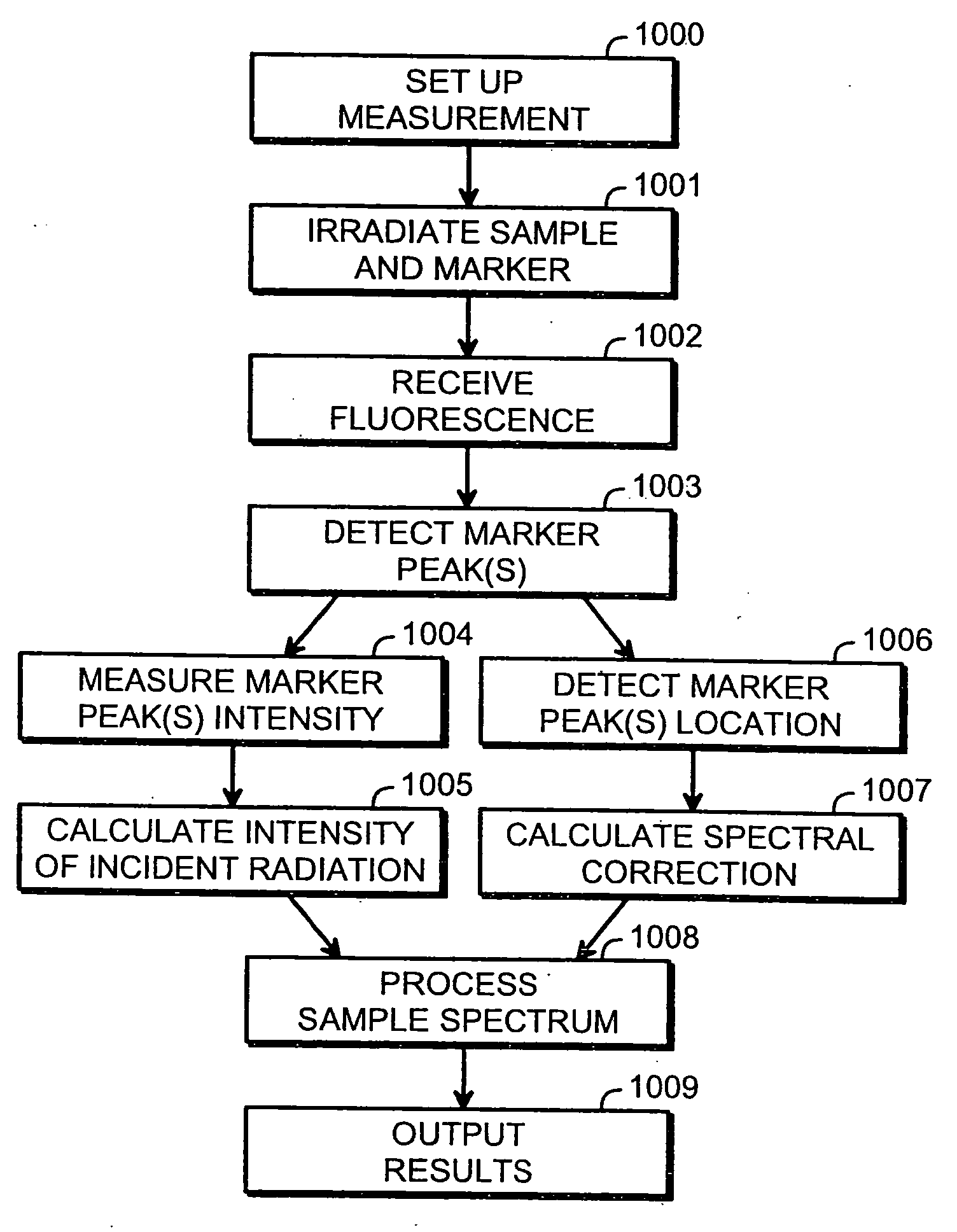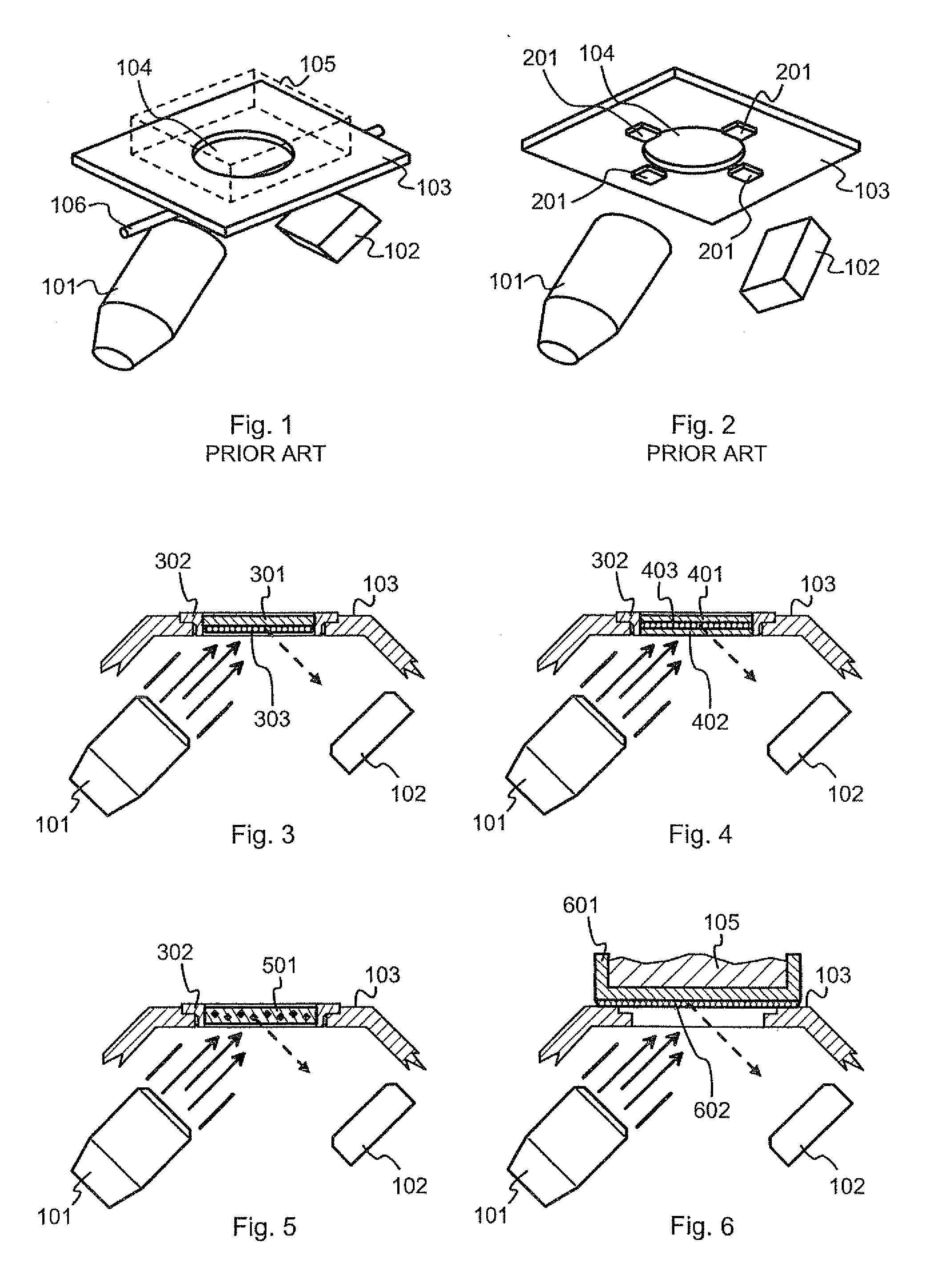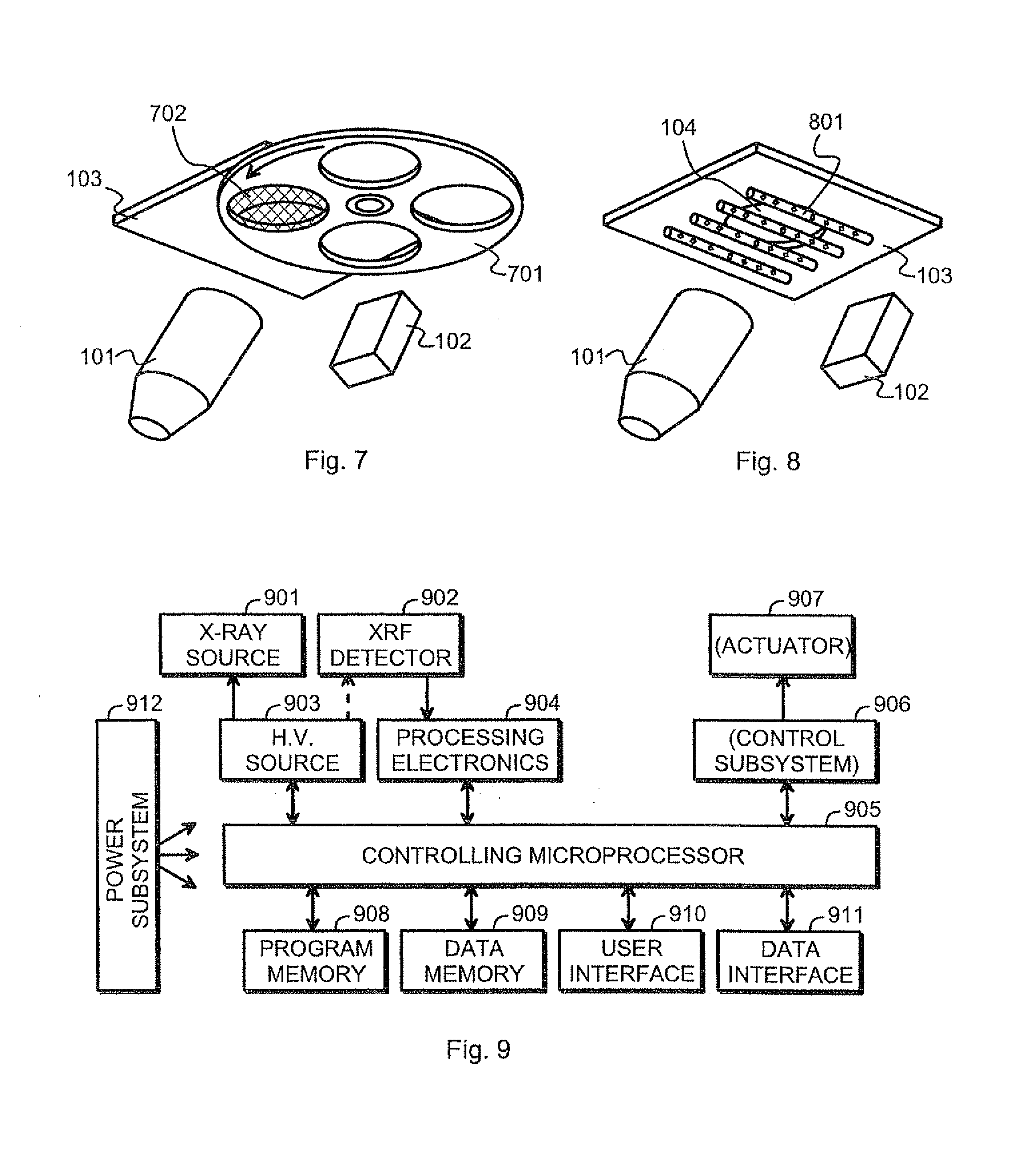Compensation for fluctuations over time in the radiation characteristics of the X-ray source in an XRF analyser
a radiation characteristic and analyzer technology, applied in the field of xray fluorescence analyzers, can solve the problems of adding unknown factors to the intensity fluctuations of the x-ray tube, xrf measurements, and not taking into account any spatial fluctuations of the x-ray beam
- Summary
- Abstract
- Description
- Claims
- Application Information
AI Technical Summary
Benefits of technology
Problems solved by technology
Method used
Image
Examples
Embodiment Construction
[0035]FIG. 3 illustrates schematically a front end of an XRF analyzer device. The term “front end” is conventionally used to designate that part of the analyzer device that incorporates the X-ray source 101 and the detector 102, and that comprises a part of the outer cover known as the front plate 103 that is configured to come against a sample for performing the XRF measurement. The front plate 103 defines a sample window for the incident X-rays and the fluorescent X-rays to pass through.
[0036]In the embodiment of FIG. 3 a protective window foil 301 is attached to the edges of the sample window with the help of a frame 302. The bulk of the window foil 301 is made of a material that is essentially transparent to X-rays, like diamond, beryllium or a plastic like polyimide. The role of the window foil 301 is basically to protect the inside of the analyzer device from contamination. If a particular gas atmosphere, lowered pressure, or other kind of controlled conditions are maintained ...
PUM
 Login to View More
Login to View More Abstract
Description
Claims
Application Information
 Login to View More
Login to View More - R&D
- Intellectual Property
- Life Sciences
- Materials
- Tech Scout
- Unparalleled Data Quality
- Higher Quality Content
- 60% Fewer Hallucinations
Browse by: Latest US Patents, China's latest patents, Technical Efficacy Thesaurus, Application Domain, Technology Topic, Popular Technical Reports.
© 2025 PatSnap. All rights reserved.Legal|Privacy policy|Modern Slavery Act Transparency Statement|Sitemap|About US| Contact US: help@patsnap.com



